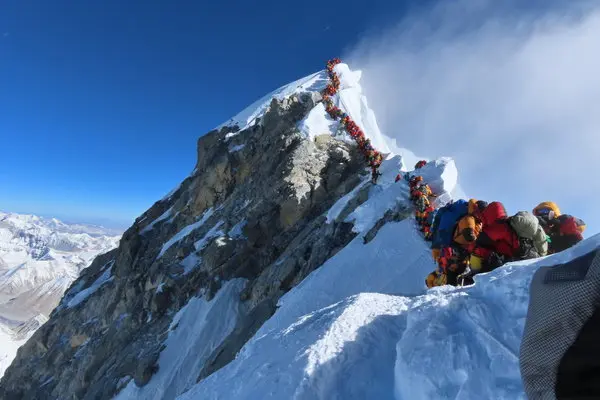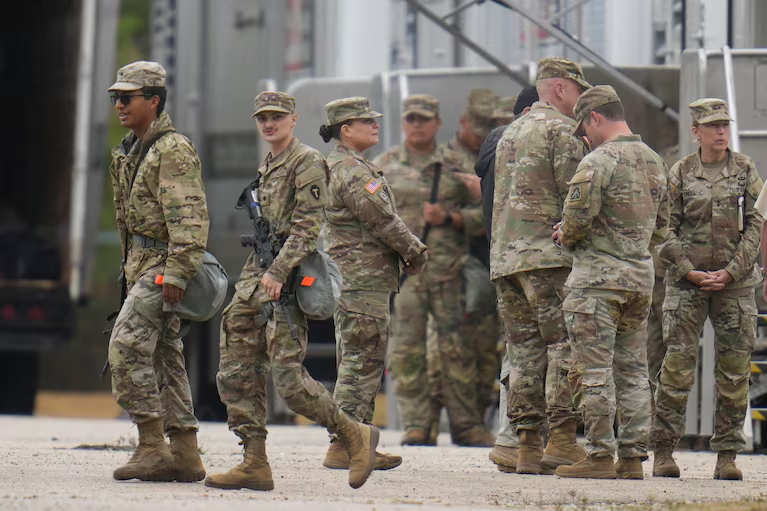It comes to no surprise that the world’s tallest mountain is unforgiving in its climate and routes. Experts on Mountain Everest note that the climb to the summit requires about four encampments (C2, C3 and C4) before the final Summit push, not including its base camp.
As of late, videos of the mountain becoming more and more overcrowded have surfaced on social media. Huge, compact, lines existing from the few dips on the mountain before the infamous summit. “In 2025, teams will have 100 members, 150 Sherpas, for 250 total climbers! Some with even more,” world mountaineer and Everest summiteer Alan Arnette said.
2019 was one of the worst with its overpopulation of the base camp and following C2, C3 and C4. Over-crowdedness is an issue when taking on such an impossible climb because of the consequences that follow. This includes fewer resources, spaces for encampments and higher risks for death when it comes to sicknesses and climbing accidents.
This year has shown many ambitious alpinists that wish to take on the peak that the Tibetans call the “Mother Goddess of the Earth.” But one of the many challenges that these climbers faced occurred in the beginning of the month of October.
Bad weather is renowned as one of the biggest environmental factors for anyone that climbs or engages with mountains of high elevations. Part of the reason as to why timing is so crucial when going for final summit pushes is the so-called “windows” of good, or preferable, weather to climb in, to reach the highest altitude of the earth’s surface.
October of 2025, however, brought a horrible snowstorm to the mountain’s east side. About 1,000 trekkers had been trapped on the eastern side due to the blizzard that had hit the eastern front. Rescuers had been able to reach and direct about 350 people toward the town of Qudang and had made contact with the rest. All of the rescue efforts had been made by the local government.
The severe weather conditions that have been increasing death rates around Mount Everest are starting to become a genuine surprise to even the most seasoned Sherpas.
“The weather this year is not normal. The guide said he had never encountered such weather in October. And it happened all too suddenly,” traveler Chen Geshuang said.
This blizzard has proved to be one of the many concerns for the Himalayans, as climate change is proving to be changing the Everstian landscape and routes have begun to change. BBC mentioned veteran guide Pasang Yanjee Sherpa, and how he discussed these changes post-Spring seasons of 2022. “They’re saying that every time they go back, the mountain looks different. So where there used to be ice last year, there’s water, where there used to be hard snow, now it’s soft snow.”
Not only are climate changes worsening the natural state of the tallest mountain on Earth, concerns about the unnatural mutations that are occurring are rising as well.
The first ever recorded summit expedition was on May 29, 1953. The first ever team to reach the top of the world was with New Zealander Sir Edmund Hillary and the team’s last surviving member is Kanchha Sherpa, who in 2024, voiced his concerns.
“It is very dirty now. People throw tins and wrappings after eating food. Who is going to pick them up now?” Kanchha said. “Some climbers just dump their trash in the crevasse, which would be hidden at that time, but eventually it will flow down to base camp as the snow melts and carries them downward.”
“It would be better for the mountain to reduce the number of climbers,” Kanchha said. “Right now, there is always a big crowd of people at the summit.”
Kancha expressed the importance of keeping the historic mountain clean, calling it a “god” and stating that hikers “should not be dirtying the gods.”
The Nepali government and Tibetans will now have to work to preserve the authenticity and cleanliness of the historic mountain range, for both the locals who worship it and the tourists who come to appreciate it.









